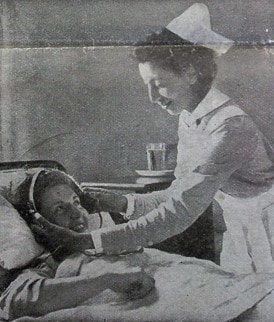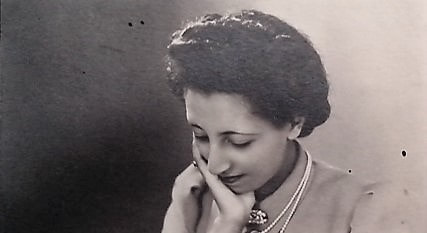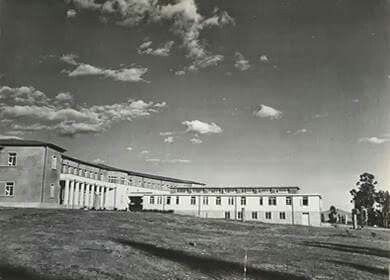January 21st: Today's Feature
- webbworks333
- Jan 21
- 4 min read
January
Princess Tsehai Haile Selassie (13 October 1919 – 17 August 1942) was the third daughter and fourth child of Emperor Haile Selassie and Empress Menen Asfaw of Ethiopia.

Early Life
Princess Tsehai, born in Addis Ababa, Ethiopia, had a privileged upbringing that exposed her to various cultures and languages. From a young age, she attended schools in England and Switzerland, accompanying her royal relatives on trips to France and Germany, where she honed her language skills in French and German. However, her life took a dramatic turn when Italy, under the rule of Benito Mussolini, sought to annex Ethiopia in 1935.
In response to the Italian threat, Tsehai took a proactive role by sponsoring the establishment of the Ethiopian Women's Welfare Work Association in August 1935. This organisation aimed to expand health and welfare programs, demonstrating Tsehai's commitment to the well-being of her fellow Ethiopians. Additionally, she volunteered with the Ethiopian Red Cross, which was formed in the same year.
As the Italian invasion of Ethiopia unfolded in October 1935, Tsehai's father, Emperor Haile Selassie, made the difficult decision to send his wife and children, including Tsehai, to England for their safety. They settled in Bath, where Tsehai served as an interpreter for her parents and became a passionate advocate for her country. She tirelessly worked to rally international support against the Italian occupation, using her position as a spokesperson to shed light on the plight of Ethiopia.
Over the next five years, Tsehai and her family remained in Bath, their temporary home. Despite being far from their homeland, Tsehai's dedication to her country never wavered. She played a crucial role in bridging the communication gap between her parents and the outside world, ensuring that their voices were heard and their cause was championed. Princess Tsehai's unwavering commitment to Ethiopia's struggle against Italian aggression is a testament to her strength and resilience.
Nursing Career in England
At the age of 17, Tsehai made a bold decision to pursue a career in nursing, despite the fact that no Ethiopian woman had ever been trained as a nurse before. Even more remarkable was the fact that Tsehai came from a royal background, where women were not expected to take up professions. However, with the help of the wife of the former British minister to Ethiopia, Tsehai was able to secure an interview with the Matron of London's prestigious Great Ormond Street Hospital for Sick Children. In August 1936, she began her training as a resident student nurse, breaking barriers and paving the way for future generations of Ethiopian women.
Throughout her training, Tsehai demonstrated her determination and commitment by not asking for any special treatment or favors. She worked alongside other student nurses for the required 56 hours a week, earning a modest salary of £20 per year. Her dedication paid off, and in 1939, Tsehai graduated as a State Registered Children's Nurse. However, she didn't stop there. With the permission to continue her studies, she enrolled at London's Guy's Hospital, aiming to become a State Registered General Trained Nurse.
The outbreak of the Second World War brought new challenges for Tsehai, as she found herself nursing civilians injured during the devastating Blitz of 1940/41. Her skills and compassion were put to the test as she cared for those affected by the horrors of war. Despite the difficult circumstances, Tsehai remained steadfast in her commitment to her profession and the well-being of her patients.
Return to Ethiopia
In 1941, the tides turned in Ethiopia's favour as Italian forces were defeated and driven out of the country by a joint effort of British, Commonwealth, and Ethiopian forces. With the Emperor and his family's return to Ethiopia, Tsehai seized the opportunity to contribute to her homeland's healthcare system. She joined Dessie Hospital, where her expertise and experience were invaluable in providing quality care to those in need.
Overall, Tsehai's journey from a young Ethiopian woman with a dream to a skilled and dedicated nurse is truly inspiring. Her determination, resilience, and willingness to break societal norms have not only paved the way for future generations but also made a significant impact on the lives of countless patients she cared for throughout her career.
Death
On 17 August 1942, Princess Tsehai tragically passed away in Nekemte due to complications arising from childbirth. Sadly, her newborn baby also did not survive. As a mark of respect and honour, Princess Tsehai was laid to rest in the crypt of the Ba'eta Le Mariam Monastery in Addis Ababa. This sacred monastery, originally constructed as the mausoleum church for Emperor Menelik II, provided a fitting final resting place for the beloved princess.
The news of her unfortunate passing deeply touched her admirers from Britain, prompting them to rally together and raise funds for the construction of the Princess Tsehai Memorial Hospital in Addis Ababa. This hospital, founded by Tsehai's father, not only served as a medical facility but also housed a nursing school, further honouring Tsehai's memory and legacy.


















